Вставки из цементированного карбидаИзвестные также как твердосплавные вставки, являются важнейшим компонентом в мире металлообработки и механической обработки. Они незаменимы благодаря своей долговечности, эффективности и универсальности. Если вы только начинаете осваивать мир обработки или просто хотите обновить свой арсенал инструментов, это руководство расскажет вам обо всем, что нужно знать о цементируемых твердосплавных пластинах. Начнем с их типов и областей применения, свойств материала и выбора подходящей вставки.
Обзор пластин из цементированного карбида
Пластины из цементированного карбида - это режущие инструменты, широко используемые в производстве и металлообработке. Они состоят из композитного материала, состоящего из частиц карбида, соединенных металлическим связующим. Этот уникальный состав придает им превосходную твердость, износостойкость и способность выдерживать высокие температуры, что делает их идеальными для резки, сверления и придания формы металлическим материалам.
Почему именно цементированный карбид?
- Долговечность: Цементированные твердосплавные пластины невероятно прочны и выдерживают интенсивную эксплуатацию.
- Эффективность: Они сохраняют остроту и эффективность резания в течение длительного времени.
- Универсальность: Подходит для широкого спектра материалов и операций обработки.
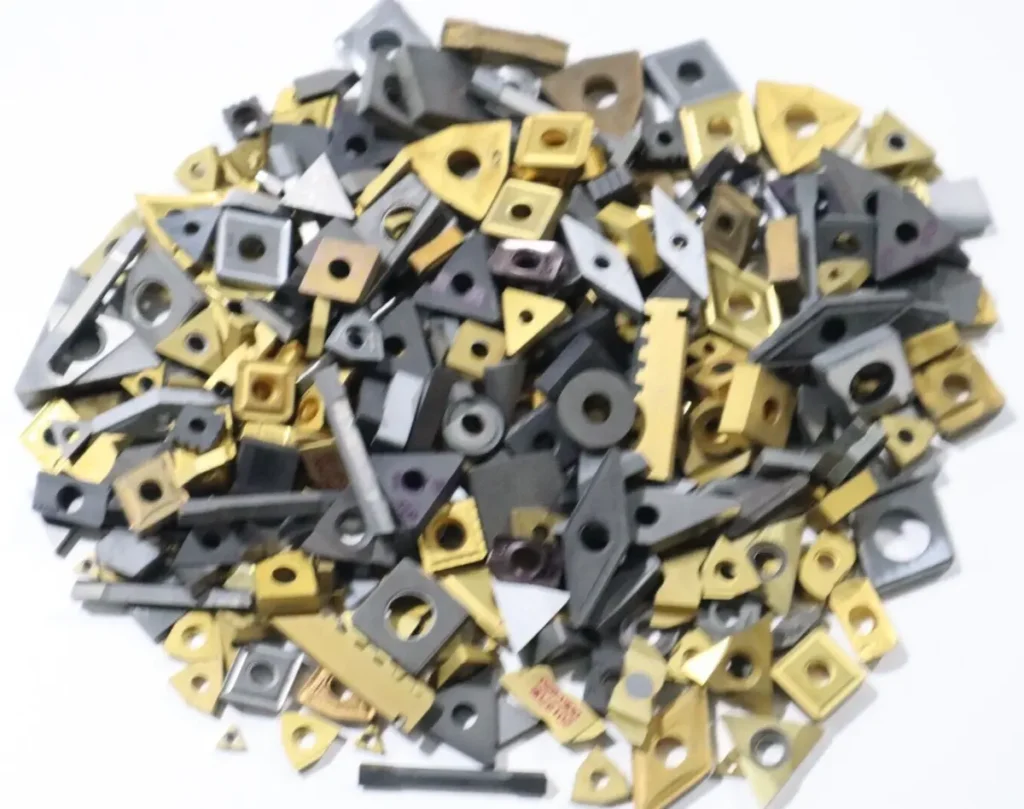
Типы Цементированные твердосплавные вставки
Существуют различные типы цементированных твердосплавных вставок, предназначенных для конкретных областей применения. Вот описание некоторых распространенных типов:
| Тип вставки | Описание |
|---|---|
| CNMG | Пластина общего назначения с режущей кромкой 80°, подходит для черновой и чистовой обработки. |
| DNMG | Пластина с режущей кромкой под углом 55°, идеально подходит для финишной обработки. |
| TNMG | Треугольная пластина, универсальная как для черновой, так и для чистовой обработки. |
| WNMG | Тригонометрическая форма с режущей кромкой 80°, используется для черновой и прерывистой резки. |
| SNMG | Квадратная вставка, очень прочная, используется для тяжелых работ. |
| CCMT | Односторонняя пластина с режущей кромкой 80°, используется для токарной обработки. |
| VBMT | Алмазная вставка, используется для тонкой обработки. |
| RCMT | Круглая вставка, идеально подходит для профилирования и контурирования. |
| APKT | Прямоугольная вставка, используется для фрезерования. |
| RPGN | Круглая вставка, отлично подходит для профилирования мягких материалов. |
Области применения пластин из цементированного карбида
Пластины из цементированного карбида используются в различных видах обработки. Вот обзор областей их применения:
| Приложение | Типы вставок | Подробности |
|---|---|---|
| Развернуть | CNMG, DNMG, CCMT, VBMT | Токарные работы подразумевают вращение заготовки, в то время как неподвижный режущий инструмент снимает материал. |
| Фрезерование | APKT, RPGN | При фрезеровании используется вращающийся режущий инструмент для удаления материала с заготовки в различных направлениях. |
| Бурение | ВНМГ, СНМГ | При сверлении с помощью вращающегося сверла в заготовке создаются круглые отверстия. |
| Скука | CNMG, VBMT | Расточка увеличивает существующие отверстия для достижения большей точности. |
| Профилирование | RCMT, RPGN | Операции профилирования позволяют создавать сложные контуры и формы на заготовке. |
| Нарезание резьбы | ТНМГ, ВБМТ | Резьбонарезные пластины используются для нарезания винтовой резьбы в заготовке. |
| Нанесение канавок | SNMG, CCMT | Прорезание канавок предполагает прорезание узких каналов в заготовке. |
| Расставание | SNMG, WNMG | Операции по обработке деталей отрезают часть заготовки. |
| Фрезерование торцов | APKT, CCMT | При торцевом фрезеровании фреза снимает материал с поверхности заготовки для создания плоской поверхности. |
| Прерванная резка | ВНМГ, СНМГ | Пластины, предназначенные для прерывистого резания, выдерживают удары и толчки при неравномерном резании. |
Свойства материалов Цементированные твердосплавные вставки
Понимание свойств материала пластин из цементированного карбида имеет решающее значение для выбора подходящей пластины для вашего применения.
| Недвижимость | Описание |
|---|---|
| Твердость | Пластины из цементированного карбида очень твердые, обычно 8,5-9 единиц по шкале Мооса. |
| Износостойкость | Высокая износостойкость делает их идеальными для резки и абразивных работ. |
| Жесткость | Несмотря на свою твердость, они обладают достаточной прочностью, чтобы выдерживать удары и толчки. |
| Термостойкость | Способны сохранять твердость и работоспособность при высоких температурах, часто превышающих 1000°C. |
| Коррозионная стойкость | Устойчивы к коррозии, что продлевает срок их службы в различных условиях. |
| Теплопроводность | Хорошая теплопроводность способствует отводу тепла при резке. |
| Плотность | Высокая плотность, обычно 14,5-15,0 г/см³. |
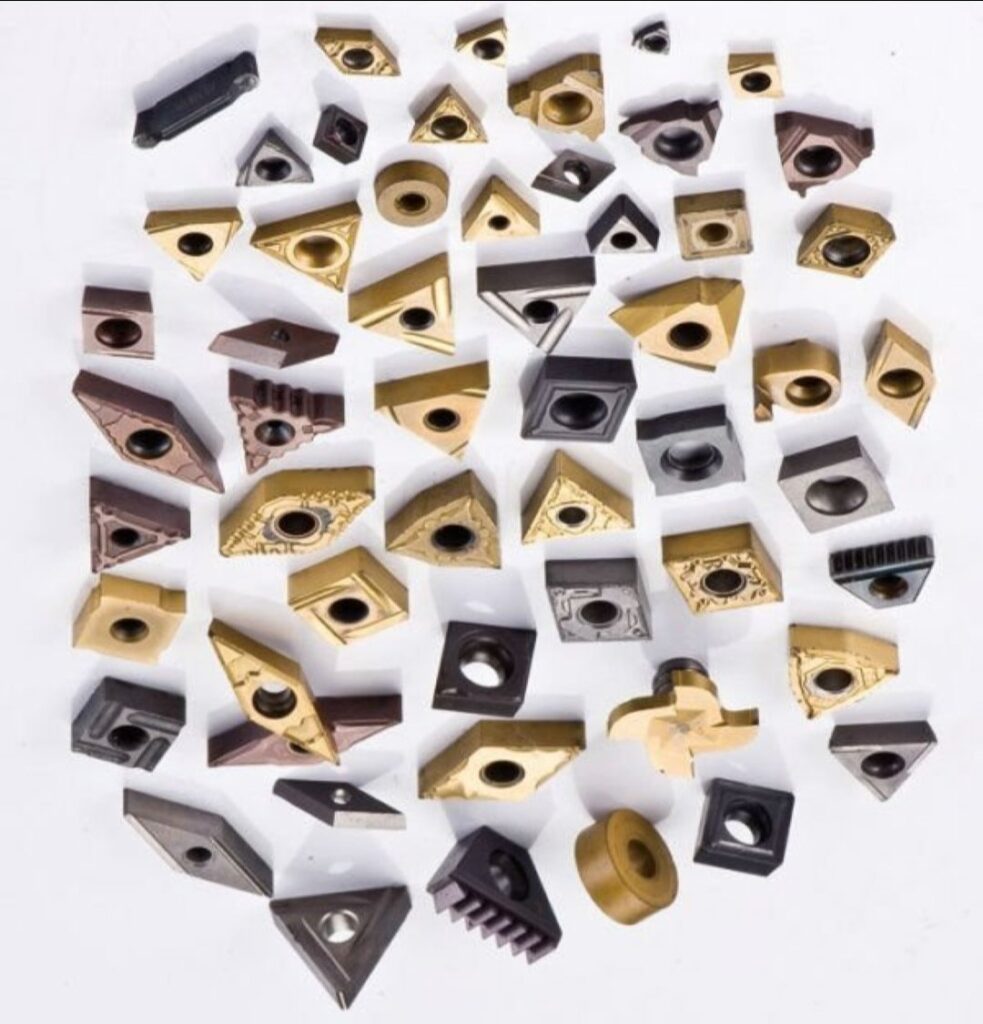
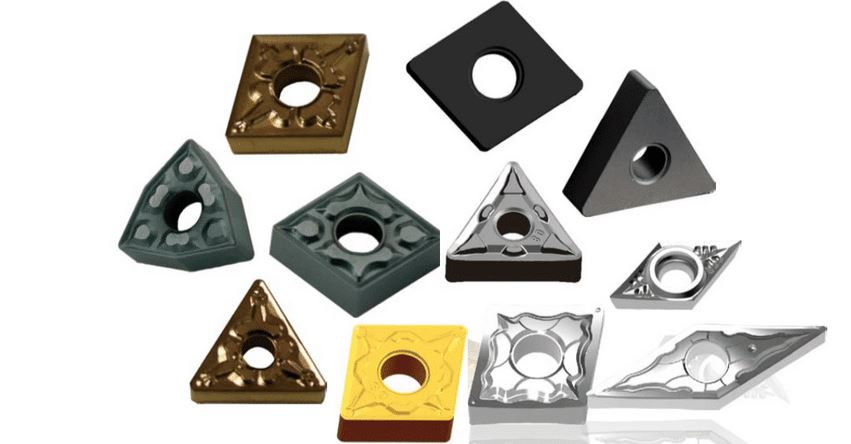
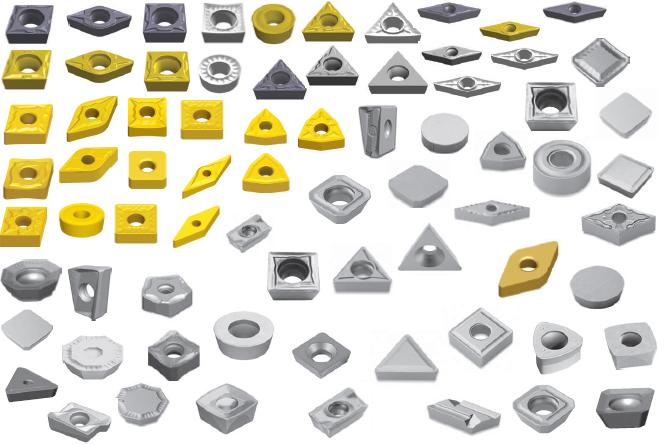

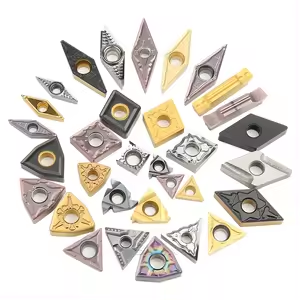
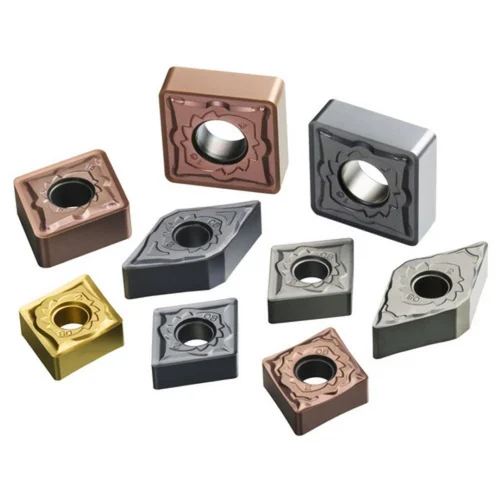
Состав и характеристики
Состав цементированных твердосплавных вставок влияет на их свойства и производительность.
| Компонент | Описание |
|---|---|
| Карбид вольфрама | Основной компонент, обеспечивающий твердость и износостойкость. |
| Кобальт | Действует как связующее, обеспечивая прочность и ударопрочность. |
| Карбид титана | Повышает твердость и термостойкость, особенно при высокоскоростной резке. |
| Карбид тантала | Повышает устойчивость к износу и деформации, особенно при высоких температурах. |
| Карбид ниобия | Улучшает зернистую структуру, повышая прочность и устойчивость к тепловым ударам. |
Твердость, прочность и износостойкость
Эти три свойства имеют решающее значение для определения пригодности пластины из цементированного карбида для конкретного применения.
| Недвижимость | Описание |
|---|---|
| Твердость | Измеряется по шкале Роквелла или Виккерса и указывает на устойчивость материала к деформации. |
| Прочность | Указывает на способность материала выдерживать механические нагрузки без разрушения или деформации. |
| Износостойкость | Означает способность материала противостоять износу и истиранию во время операций резки. |
Технические характеристики, размеры, формы и стандарты
Пластины из цементированного карбида бывают разных размеров, форм и стандартов, чтобы удовлетворить различные потребности в обработке.
| Спецификация | Подробности |
|---|---|
| Стандарты ISO | ISO 1832: Определяет размеры и допуски для твердосплавных пластин. |
| Формы | Треугольник, квадрат, алмаз, круг, прямоугольник, тригон и т.д. |
| Размеры | Выпускаются различных размеров для установки различных держателей инструментов и применения. |
| Классы | Различные марки обладают разной степенью твердости, прочности и износостойкости. |
Поставщики и ценовая политика
Поиск надежных поставщиков и понимание ценовой политики очень важны для совершения осознанной покупки.
| Поставщик | Регион | Ассортимент продукции | Цена (приблизительно) |
|---|---|---|---|
| Kennametal | Глобальная | Широкий ассортимент твердосплавных пластин | $5 - $50 за вставку |
| Sandvik Coromant | Глобальная | Высокопроизводительные вставки | $10 - $60 за вставку |
| Mitsubishi Materials | Глобальная | Различные типы и марки | $7 - $45 за вставку |
| Sumitomo Electric | Глобальная | Современные режущие инструменты | $8 - $55 за вставку |
| ИСКАР | Глобальная | Инновационные твердосплавные вставки | $9 - $65 за вставку |
| Инструменты Walter | Глобальная | Широкий ассортимент | $6 - $40 за вставку |
| Инструменты Seco | Глобальная | Высокоточные вставки | $7 - $50 за вставку |
| YG-1 | Глобальная | Доступные и качественные вставки | $5 - $35 за вставку |
| Tungaloy | Глобальная | Вставки из современных материалов | $10 - $55 за вставку |
| Kyocera | Глобальная | Высокопрочные вставки | $8 - $50 за вставку |
Выбор правильного Цементированные твердосплавные вставки
При выборе подходящей цементированной твердосплавной вставки необходимо учитывать несколько факторов.
| Рассмотрение | Подробности |
|---|---|
| Обрабатываемый материал | Для разных материалов требуются разные свойства вставки. |
| Тип обработки | Тип операции (точение, фрезерование, сверление) диктует форму и свойства необходимой пластины. |
| Условия резки | Скорость, подача и глубина резания являются решающими факторами. |
| Совместимость с держателями инструментов | Убедитесь, что вставка подходит к используемому держателю инструмента. |
| Стоимость | Баланс между стоимостью и производительностью для соблюдения бюджетных ограничений. |
Преимущества и ограничения
Сравнение преимуществ и ограничений пластин из цементированного карбида помогает принять взвешенное решение.
| Аспект | Преимущества | Ограничения |
|---|---|---|
| Твердость | Чрезвычайно твердые, сохраняют остроту в течение длительного времени. | Может быть хрупкой и склонной к сколам при неправильном использовании. |
| Износостойкость | Высокая износостойкость, снижающая необходимость частой замены. | Может быть дороже по сравнению с другими материалами. |
| Термостойкость | Сохраняет свойства при высоких температурах, подходит для высокоскоростных операций. | Требуется точное охлаждение и смазка, чтобы избежать термического повреждения. |
| Универсальность | Подходит для широкого спектра материалов и применений. | Для различных применений требуются особые вставки, что усложняет процесс инвентаризации. |
| Долговечность | Длительный срок службы, сокращение времени простоя и повышение производительности. | Высокая первоначальная стоимость может стать причиной для некоторых пользователей. |

Вопросы и ответы
Для чего используются вставки из цементированного карбида?
Пластины из цементированного карбида используются в различных операциях обработки, таких как точение, фрезерование, сверление и растачивание. Их предпочитают за твердость, износостойкость и способность сохранять работоспособность при высоких температурах.
Как выбрать подходящую твердосплавную вставку для моей задачи?
При выборе подходящей твердосплавной пластины необходимо учитывать обрабатываемый материал, тип обработки, условия резания, совместимость с держателем инструмента и стоимость.
Каковы преимущества использования цементированных твердосплавных вставок?
К основным преимуществам относятся высокая твердость, отличная износостойкость, жаропрочность, универсальность и долговечность. Благодаря этим свойствам повышается производительность и увеличивается срок службы инструмента.
Можно ли использовать твердосплавные вставки повторно?
Да, твердосплавные пластины часто можно использовать повторно после повторной заточки. Однако степень повторного использования зависит от состояния пластины и конкретных требований к обработке.
Каковы распространенные марки цементированных твердосплавных пластин?
К распространенным маркам относятся C2, C3, C5 и C7, каждая из которых обладает различными уровнями твердости, вязкости и износостойкости, подходящими для конкретных областей применения.
Как хранить цементированные твердосплавные пластины?
Храните их в сухом прохладном месте, вдали от прямых солнечных лучей и влаги. Использование соответствующих контейнеров для хранения поможет предотвратить повреждение и сохранить их качество.
Существуют ли какие-либо экологические соображения при использовании твердосплавных пластин?
Цементированные твердосплавные пластины изготавливаются из материалов, которые могут быть переработаны. Важно следовать надлежащей практике переработки, чтобы минимизировать воздействие на окружающую среду.
Каковы некоторые распространенные марки цементированных твердосплавных вставок?
Среди популярных брендов - Kennametal, Sandvik Coromant, Mitsubishi Materials, Sumitomo Electric, ISCAR, Walter Tools, Seco Tools, YG-1, Tungaloy и Kyocera.
Чем отличаются пластины из твердого сплава от других режущих инструментов?
По сравнению с другими режущими инструментами твердосплавные пластины обладают повышенной твердостью, износостойкостью и термостойкостью. Они более долговечны и эффективны, но могут стоить дороже.
Каков средний срок службы твердосплавной вставки?
Срок службы зависит от области применения, обрабатываемого материала и условий резания. Однако твердосплавные пластины обычно служат дольше других режущих инструментов благодаря своим прочным свойствам.
Заключение
Цементированные твердосплавные пластины являются краеугольным камнем современной обработки, обеспечивая непревзойденную долговечность, эффективность и универсальность. Независимо от того, являетесь ли вы опытным профессионалом или только начинаете работать в мире обработки, понимание типов, областей применения, свойств материалов и критериев выбора твердосплавных пластин может существенно повлиять на вашу производительность и успех обработки.
Правильный выбор твердосплавной вставки позволит вам повысить эффективность обработки, сократить время простоя и добиться превосходных результатов. Изучите различные варианты, поймите свои конкретные потребности и примите взвешенные решения, чтобы использовать весь потенциал твердосплавных вставок в своих проектах.




